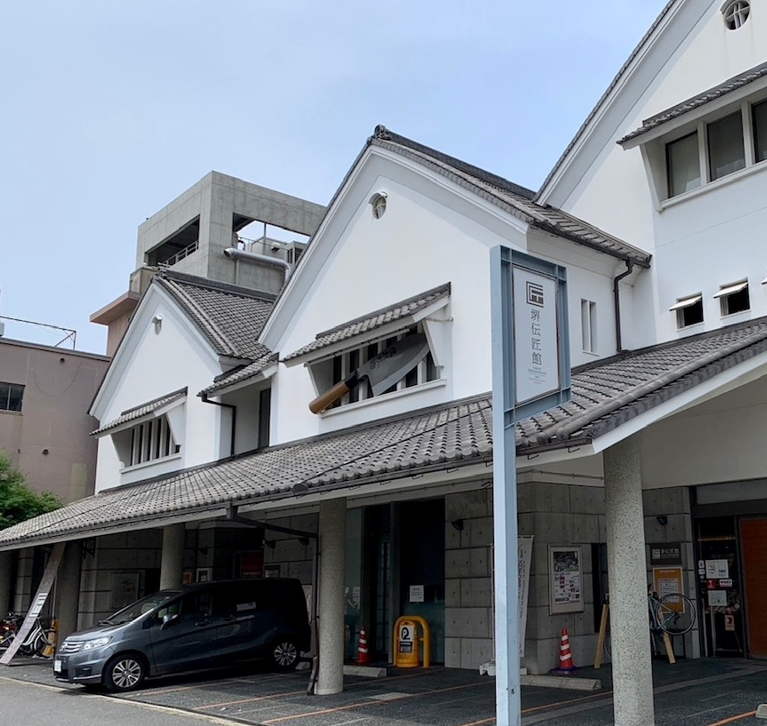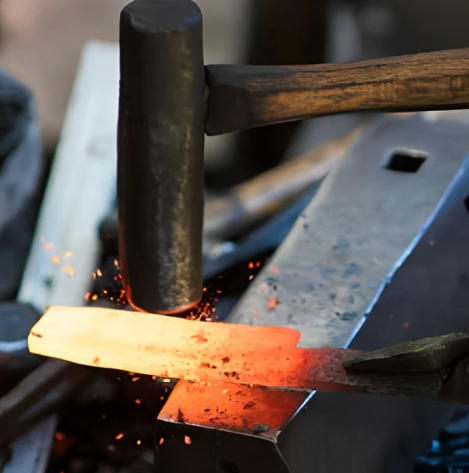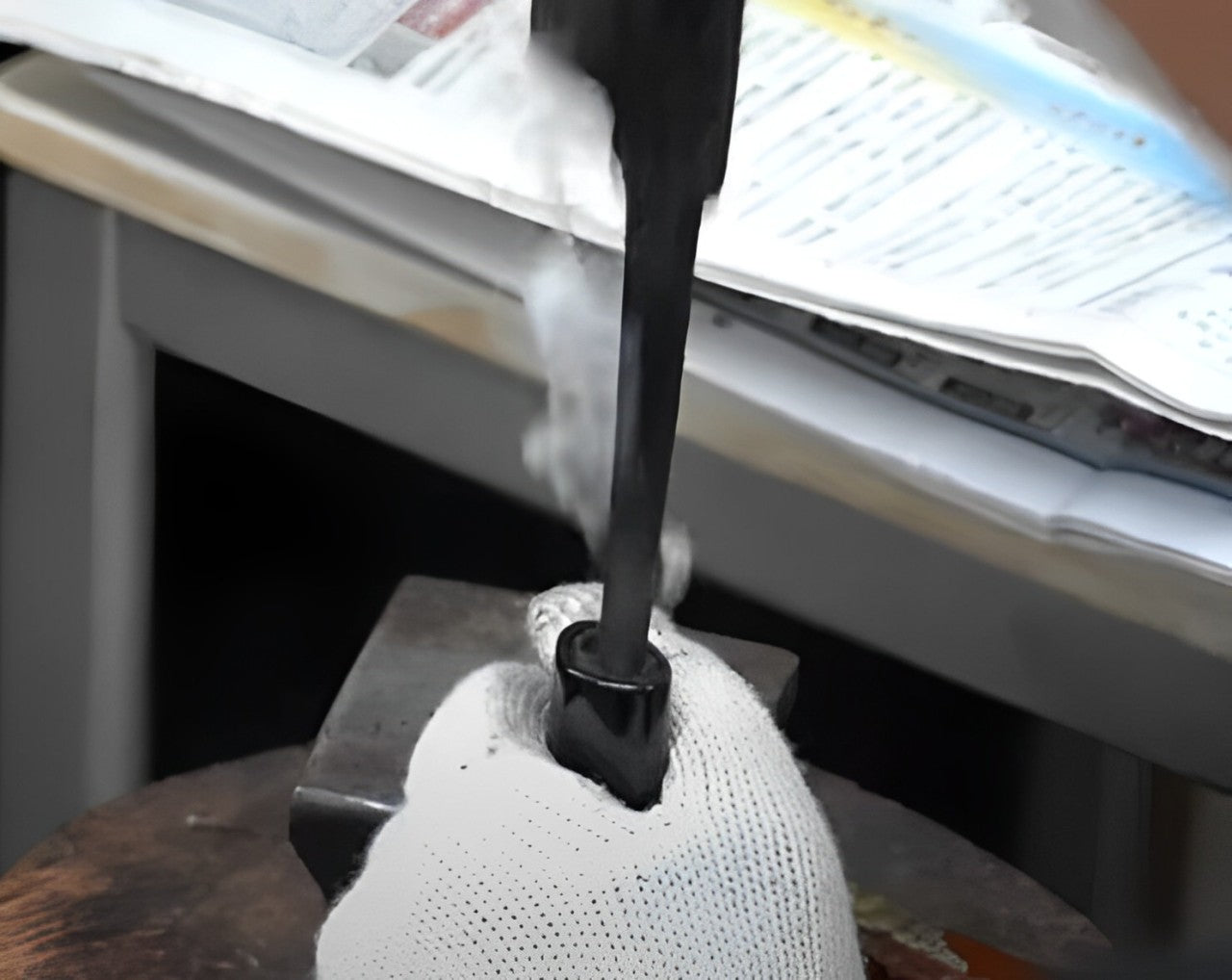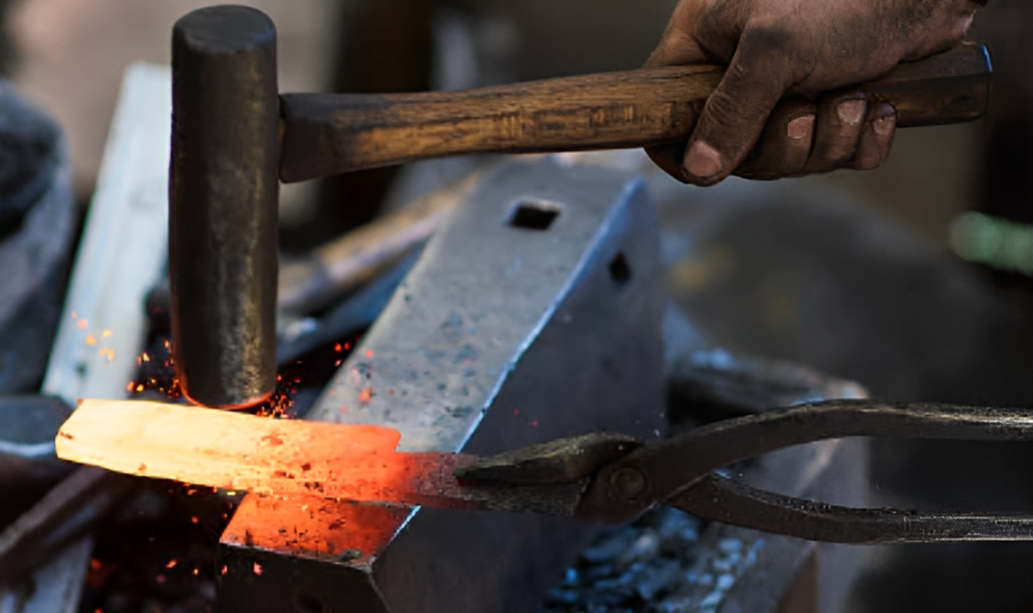
Three Major Knife Regions in Japan
-
Japan is home to three renowned knife-producing regions: Sakai City in Osaka Prefecture, Sanjo City in Niigata Prefecture, and Seki City in Gifu Prefecture. Each area has cultivated a unique knife-making tradition, combining centuries-old techniques with regional characteristics.
-

- Sakai City leads the industry, producing over 98% of Japan's professional kitchen knives. Known for its mastery in crafting single-edged blades, Sakai is the birthplace of the Deba knife and other precision tools used by professional chefs.
- Sanjo City is celebrated for its robust double-edged knives, forged with durability in mind. These knives are popular in both professional and household settings.
- Seki City, historically a center for swordsmithing, excels in producing high-quality, mass-market knives. Its blend of traditional techniques and modern technology makes Seki knives versatile and accessible.
-
-

-
By understanding these regional differences, you can appreciate the artistry and functionality that define Japanese cutlery.
Knife Structures Mastered by Japan’s Three Major Cutlery Regions
-
Japan is home to three major knife-making regions that are renowned worldwide: Sakai (Osaka), Sanjo (Niigata), and Seki (Gifu).
Each of these regions has cultivated its own blacksmithing traditions, giving rise to a wide variety of knife types tailored to specific culinary needs. These regional techniques have played a vital role in shaping the art of Japanese cuisine. -
The table below summarizes the typical knife constructions—Honyaki, Kasumi (Awase), and Zenkou (monosteel)—produced in each region and their distinctive characteristics.
Wondering which region’s knives best suit your needs?
The answer may lie just ahead. -

The Essence of Sakai Knives: A Commitment to Handcraftsmanship
-
Sakai’s reputation stems from its dedication to meticulous handcraftsmanship. Unlike other regions that embraced mechanization, Sakai has preserved its traditional methods, ensuring every knife undergoes three critical stages by hand: Forging, Sharpening, and Handle Attachment.
-

- Forging involves shaping high-quality steel at extreme temperatures, forming the knife’s core structure.
-
- Sharpening is performed by experienced artisans who meticulously hone the blade for unmatched precision.
-
- Handle Attachment ensures a seamless connection between the blade and handle, contributing to the knife’s balance and ease of use.
-
This unwavering commitment to craftsmanship results in knives that are not only sharp and durable but also imbued with the artisan’s soul, making them an essential tool for professional chefs.
-
Why Choose Sakai?
A Sakai knife is more than a tool—it’s a partner in your culinary journey. With its exceptional sharpness, durability, and craftsmanship, it transforms cooking into an art form. Whether you’re a professional chef or a passionate home cook, Sakai knives offer a tangible connection to Japan’s rich tradition of knife-making.
-
Discover the unparalleled quality of Sakai knives and elevate your cooking experience today.

The 98% Statistic: Verifying the Source
The Sakai Tourism Bureau states that "98% of Japanese chefs use Sakai knives" in their articleAppeal of World Renowned Sakai Knives. This claim underscores the enduring reputation of Sakai craftsmanship.
1. Sakai - The Sacred Home of Japanese Knives
-
A 600-Year Legacy of Steel and Craftsmanship: The Origin of Blade Excellence That Captivates the World
-
1-1. Ancient Tombs and Blade Crafting - The Regional Character of Sakai City
-
A Historic Gateway Facing Osaka Bay
Located in southern Osaka Prefecture, Sakai City has flourished as a port town where domestic and international cultures converge, thanks to its strategic location facing Osaka Bay. Blessed with the mild Seto Inland Sea climate, the region enjoys relatively gentle weather conditions year-round, providing an ideal environment for the delicate craft of blade making.
-
-
A City Where Artisan Culture Lives and Breathes
Sakai City's greatest characteristic lies in its specialized division of labor system. By having specialized craftsmen handle the three distinct processes of forging, sharpening, and handle attachment, the city achieves world-class quality. This culture emerged from the unique fusion of abundant groundwater resources and cutting-edge techniques brought through continental trade, creating Sakai's distinctive artisan community.
-
1-2. From Ancient Tombs to Modern Times - 1,500 Years of Blade History
-

Emperor Nintoku's Mausoleum and the Birth of Forging Techniques
The origins of Sakai's blade making can be traced back to the construction of Emperor Nintoku's Mausoleum in the 5th century. Building this massive tomb, stretching 840 meters in length, required enormous quantities of earthwork tools like spades and hoes. Blacksmiths gathered from across the nation for this massive construction project settled in Sakai, establishing sophisticated metalworking techniques that took root in the region.
-
The Warring States Period Breakthrough - From Matchlock Rifles to Kitchen Knives
In the 16th century, Sakai's forging techniques made a dramatic leap forward through manufacturing matchlock rifles introduced from Portugal.Sakai-made matchlock rifles earned tremendous support from warlords including Oda Nobunaga. The precision techniques developed for these firearms later became the foundation for knife making. When the era of warfare ended, weapon manufacturing techniques were transformed for peaceful cooking implements, laying the groundwork for the knife culture that continues today.
-

Perfection in the Edo Period
During the Edo period, Sakai knives gained immense trust from chefs nationwide. Particularly with the development of Kansai culinary culture, specialized knives for different purposes were developed one after another, including deba (fish filleting), sashimi (fish slicing), and usuba (vegetable cutting) knives, completing the prototype of modern Japanese knives.
-
1-3. World-Recognized Craftsmanship - The Distinctive Features of Sakai Blades
-

The Art of Forged Blade Construction
The "forged blade" structure combines hard steel (hagane) with soft iron (jigane), achieving both flexibility and hardness. This two-layer construction realizes both ease of sharpening and lasting sharpness.
-
Specialized Division of Labor Quality Control
The division of forging, sharpening, and handle attachment into three specialized processesallows for the ultimate pursuit of technique in each stage. This division of labor system supports Sakai knives' overwhelmingly superior quality.

(1) Forging
The blade material is heated in a furnace and shaped with a hammer. This process involves over 10 steps, with the material being heated in a high-temperature furnace each time, hammered repeatedly, and forged. Finally, the “ji” (base) is shaped into the desired form of the knife.

(2) Sharpening
Multiple sharpening stones are used to bring the blade to a cutting state. Depending on the type of knife, over 10 different sharpening stones might be used for various purposes. This process is called “Hatsuke” or sharpening.

(3) Handle Attachment
This is the process of attaching the handle to the sharpened blade. The part inserted into the handle is heated, inserted, and any distortions are corrected. By making final adjustments to invisible distortions, a high-quality knife with prolonged sharpness is achieved.
-
Sharpness That Brings Out Ingredients' Best
Rather than mere sharpness, the technique cuts ingredients without crushing their cellular structure. This maximizes the natural flavors and textures of ingredients, captivating chefs worldwide.
-

Lifetime Maintainability
Designed to last for decades with proper resharpening. The more it's used, the better it fits the hand, with the craftsman's skill and user's experience growing together as one with the knife.
-
1-4. Fusion of Tradition and Innovation - Adapting to the Modern World
-
Taking on the Global Market
Today, Sakai knives are exported to over 30 countries worldwideand receive high praise from Michelin-starred restaurants. To meet the needs of international chefs, Western knife techniques have been actively incorporated alongside traditional Japanese knives, developing new-style knives that fuse Eastern and Western technologies.
-

Skill Inheritance and Modernization
While preserving traditional handcrafting methods, quality control techniques and research into new materials are being actively introduced. Through facilities like the Sakai Denshokan and TAKUMI SHOP, hands-on knife-making experiences and cultural promotion are emphasized, working toward skill inheritance to the next generation and enhancing international recognition.
-
Sustainable Artisan Culture
Addressing the challenges of an aging artisan community,young craftsman training programs and overseas apprenticeship systems have been introduced. While reliably passing traditional techniques to the next generation, knives adapted to modern lifestyles are also being developed. Sakai's blade culture, continuing for six centuries, is still evolving today.

Why Do Professionals Choose Sakai Knives?
The secret is in theirunmatched sharpness, crafted fromcenturies-old techniquesblended withmodern innovation. The moment you hold one, your culinary passioncomes alive.

Sakai's Declining Japanese Knife Craftsmen
Sakai's esteemed cutlery tradition, renowned for its sharpness and craftsmanship, is at risk with only a dozen blacksmiths remaining. Facing competition and declining interest, strategies such as exploring new markets and fostering youth interest are vital for survival. This situation underscores a broader challenge in cultural preservation. Supporting Sakai’s craftsmen is crucial to maintaining this legacy.

Sakai Uchihamono
It was designated as "Traditional Crafts" by the Minister of Economy, Trade and Industry on March 5, 1982.
2. Sanjo – Why This City’s Blade-Making Captivates the World
-
-
Sanjo City in Niigata Prefecture is widely recognized as one of Japan's leading centers for kitchen knives. Its origins trace back to the Kamakura period, when master swordsmiths Motoshige and Kaneshige settled in the area and began producing Japanese swords. As demand for swords declined during the Edo period, Sanjo's craftsmen adapted by transitioning to the production of knives and agricultural tools, laying the foundation for its thriving blade industry. This ability to adapt has been crucial in establishing Sanjo City's renowned status today.
-
2-1. A Town Forged by Nature
-
— Geography, Climate, and Artisan Culture
Located in central Niigata Prefecture, Sanjo City is surrounded by the Shinano River and its tributary, the Igarashi River. These abundant water sources have played a crucial role in metalworking, particularly for cooling and cleaning during forging. This environment laid the foundation for Sanjo’s transformation into one of Japan’s top three cutlery production regions. The resilience of its people—developing techniques while facing recurring floods—gave rise to a unique culture that truly "hones skill in harmony with nature."
-
2-2. The Origins of Sanjo's Metalworking
-

— Not from Samurai Swords, but from Traditional Nails
Unlike many other cutlery towns in Japan, Sanjo’s blacksmithing heritage does not begin with swordsmiths. In 1625, local administrator Seibei Otani invited blacksmiths from Edo (now Tokyo) to teach local farmers how to forge Japanese-style nails (wakugi) as part of a flood-relief effort. By 1649, specialized blacksmith villages emerged, and by the Kanbun Era (1661–1673), Sanjo was producing a wide array of tools, including sickles, saws, and knives. Over time, Sanjo’s unique approach to non-sword cutlery manufacturing gained prominence and regional influence.
-
2-3. The Craft in Every Blade
-
— Characteristics of Sanjo Cutlery
Sanjo is a rare region where both traditional "forged blades" (uchihamono) and modern "stamped blades" (nukihamono) have evolved in tandem. It was also one of the first areas to embrace mass production of stainless steel knives, especially for household use.
-

■ Forged Blades: Soul of the Blacksmith
Echigo Sanjo Uchihamono are made using traditional forging methods, where heated steel is repeatedly hammered to perfection. Each knife is hand-forged, ensuring optimal balance of hardness, flexibility, and sharpness—perfect for slicing vegetables, meat, or fish. Renowned products include gyuto (chef’s knives) and santoku knives, many featuring multi-layer Damascus steel that offers both beauty and high performance.
-

■ Stamped Blades: Efficient and Modern
After WWII, Sanjo developed stamped blade manufacturing, responding to the demand for household kitchen knives. Using press machines, stainless steel is cut, heat-treated, sharpened, and polished in a streamlined process. This allowed for consistent quality and lower costs, establishing Sanjo as a pioneer in stainless steel kitchen knives.
-
■ Stainless Steel Innovation and Accessibility
Traditional carbon steel blades are known for their sharpness but require skilled maintenance due to their susceptibility to rust. Sanjo’s manufacturers, such as Shinomura Industry, led the way in developing rust-resistant stainless steel knives suitable for everyday use. These products—easy to maintain, durable, and expertly sharpened—have since gained worldwide acclaim.
-
Sanjo's strength lies in its versatility—offering everything from master-forged artisanal knives to precisely engineered stainless steel products. This diversity reflects a unique environment where tradition and technological innovation coexist, creating a world-class manufacturing culture.
-
2-4. Tradition Meets Innovation — Sanjo Today
-
Sanjo exemplifies a balance of heritage and modernization. In 2009, Echigo Sanjo Uchihamono was designated as a Traditional Craft by Japan’s Ministry of Economy, Trade and Industry, affirming its cultural and historical value. At the same time, the city continues to evolve—producing knives with VG‑10 steel, stainless Damascus, and outdoor or Western-style blades. Artisans are launching their own brands, and collaborations with international chefs are increasing, showing that tradition here is not static—it progresses with the times.
-
Tradition Meets Innovation — Sanjo Today
-
Sanjo exemplifies a balance of heritage and modernization. In 2009, Echigo Sanjo Uchihamono was designated as a Traditional Craft by Japan’s Ministry of Economy, Trade and Industry, affirming its cultural and historical value. At the same time, the city continues to evolve—producing knives with VG‑10 steel, stainless Damascus, and outdoor or Western-style blades. Artisans are launching their own brands, and collaborations with international chefs are increasing, showing that tradition here is not static—it progresses with the times.

Characteristics of Echigo Blades
Sanjo City in Niigata Prefecture is renowned for its Echigo Sanjo Uchihamono blades, meticulously crafted using traditional hammering techniques. These knives, forged with advanced methods, boast exceptional wear resistance thanks to their compact metal structure. The extensive craftsmanship involved in this process ensures that each knife reflects the unique individuality of its maker. Known for their durability and versatility, these blades are a top choice for high-quality kitchen knives.

History of Echigo Blades
Sanjo City in Niigata Prefecture boasts a rich history in iron tool manufacturing, which originated as a secondary occupation for farmers during the Edo period. Known for its Echigo Sanjo cutlery, the city, together with Tsubame, has become a cornerstone of Japan's metal processing industry. In 2009, Echigo Sanjo cutlery was officially recognized as a traditional craft, encompassing a wide range of tools. The local blacksmith group, comprising 27 manufacturers, ensures consistent quality throughout the entire production process—from forging to sharpening—enhancing the area's reputation for exceptional craftsmanship.

3. Seki - One of the World’s Top Three Cutlery Centers
-
3-1. A Forge Town Nurtured by Nature
-
— Geography, Climate, and Artisan Culture
Sekiya City, located in southern Gifu Prefecture, is blessed with abundant water resources from the clear Nagara River and a cool, stable climate ideal for metalworking. Known as a “town of blacksmiths,” it has cultivated a rich artisan culture, from master swordsmiths to modern cutlery craftsmen. A well-established division of labor exists locally, where specialists handle forging, polishing, sharpening, and finishing, ensuring the production of high-quality blades.
-
3-2. A Legacy of Swordsmith Tradition
-
— The Birthplace of Mino-den and the Legendary Swordsmith “Magoroku Kanemoto”
Sekiya is the birthplace of Mino-den, one of Japan’s major sword-making schools. From the Muromachi to Sengoku periods, Mino-den focused on practicality, creating swords known for being “easy to handle” and exceptionally sharp. Unique forging techniques such as the “Shihou-zume” method and distinctive temper patterns (hamon) are hallmarks of blades from this region.
The 16th-century master swordsmith Magoroku Kanemoto, a key figure in Sekiya’s history, was renowned for producing swords that were “unbreakable, unbendable, and razor-sharp.” His works were highly valued by many samurai warriors, leaving a lasting legacy that continues to inspire the city’s cutlery industry.
-
3-3. Characteristics of Sekiya Cutlery
-
— A Fusion of Traditional Mino-den Techniques and Modern Mass Production
Sekiya’s cutlery uniquely combines traditional hand-forging skills with cutting-edge automation and mechanization.
-

■ Forged Blades Carrying Mino-den’s Spirit
Traditional forging techniques are used to create steel blades that balance hardness and toughness perfectly. Skilled artisans meticulously polish and sharpen each blade by hand, resulting in products that balance functionality and beauty, often featuring mirror finishes and lacquered handles.
-

■ Automated Mass Production of Household Knives
At the same time, Sekiya has become world-famous for its mass production of household knives based on press-stamping techniques. By integrating advanced AI, industrial robots, and computer-controlled production, the city has achieved highly efficient and precise manufacturing. Even complex grinding processes, once dependent on artisan skill, are now automated, enabling the production of high-quality knives at affordable prices.
The traditional division of labor remains vital, harmonizing machine precision with craftsmanship to maintain product excellence.
-
■ High-Quality Materials and Finishes
Sekiya uses premium steels such as VG10 and layered stainless steels tailored to different uses. The knives are prized for their sharpness, corrosion resistance, and ease of use, serving both home cooks and professional chefs worldwide.
-
3-4. Tradition and Innovation in Harmony
-
— Sekiya’s Cutlery Culture Shining on the Global Stage
Sekiya is internationally recognized as one of the “World’s Three Great Cutlery Centers,” alongside Sheffield (UK) and Solingen (Germany). This distinction reflects Sekiya’s ability to combine the centuries-old Mino-den tradition with modern automated mass production — achieving both high quality and cost competitiveness.
The annual Sekiya Cutlery Festival attracts enthusiasts and buyers from around the world, showcasing traditional craftsmanship alongside new technologies and fostering global expansion. Local artisans continue to preserve heritage techniques while actively innovating with new materials and designs, ensuring the legacy thrives into the future.
-
The Blade that Cuts Into the Future
-
Sekiya’s blades carry the pride of the Mino-den tradition dating back to the Muromachi period, reaching kitchens and workshops worldwide thanks to advances in mechanization and automation. Every blade carries the spirit of master swordsmiths like Magoroku Kanemoto and modern artisans alike — a “living tradition” that tells a story of Japan’s culture, history, and relentless pursuit of craftsmanship excellence.

Characteristics of Seki Blades
Seki City in Gifu Prefecture is renowned for its blade production, placing it among the world’s premier centers, such as Solingen, Germany, and Sheffield, UK. Seki blades are highly regarded for their exceptional sharpness, chip resistance, and strong core, all resulting from the secret techniques passed down by master craftsmen. The knives are crafted from exceptionally pure iron-based steel, ensuring they remain rust-free. The manufacturing process in Seki involves a highly specialized division of labor, with craftsmen focusing on specific stages of production, ultimately producing knives of the highest quality.

History of Seki Blades
Seki City's blade-making heritage dates back to the Kamakura period, beginning with the legendary swordsmith Genju. The area's natural resources, such as high-quality clay and pine charcoal, made it an ideal location for bladesmithing, attracting over 300 craftsmen by the Muromachi period. Known for producing durable and sharp blades, Seki City's reputation for excellence in blade-making endures, and the city continues to produce a wide variety of high-quality knives to this day.

The Origin of Craftsmanship
-
The Art of Collaboration: The Legacy Behind Sakai Knives
The tradition of making Sakai knives is rooted in a unique approach that has been passed down through generations: collaboration through division of labor. Blacksmiths, blade sharpeners, and distributors—each focuses on their expertise, honing their craft to create knives of the highest quality.
-
Rather than one craftsman handling every step, each specialist refines their part of the process. Blacksmiths dedicate themselves to forging the steel, blade sharpeners perfect the edge, and distributors ensure these exceptional knives reach the hands of users. This synergy is what gives Sakai knives their world-renowned excellence.
-
Division of labor is not just about splitting tasks; it’s about trust and mutual support. Knowing that the knife I forge will be further elevated in the next stage inspires a sense of responsibility and fuels my desire to create something truly exceptional.
-
The legacy of Sakai knives thrives because of this collaborative spirit, where each step is an act of dedication and respect for the craft. Every knife we produce carries the collective passion and skill of many artisans. Today, we continue this tradition, pouring our hearts into every blade, ensuring that the legacy of Sakai lives on for generations to come.
Is It Really "Made in ○○"? – The Truth Behind Origin Labels
-
When browsing online shops, you often see knives labeled as "Made in ○○." However, this does not always mean they were actually produced in that region.
In some cases, only the final steps, such as engraving the brand name, are performed locally, yet the knife is still labeled as "Made in ○○." Even worse, there are instances where knives are falsely marketed as originating from a region when they were never made there in the first place. Always be cautious when making a purchase.
-
At KIREAJI, we work directly with Shiroyama Knife Workshop in Sakai City and ship handcrafted knives straight from the workshop to customers worldwide. We guarantee that every knife comes authentically and directly from the hands of skilled craftsmen.














